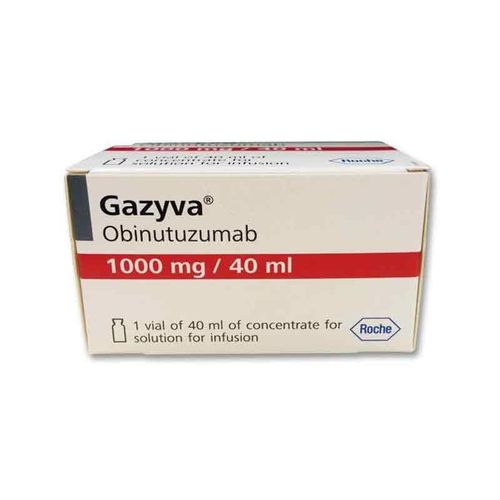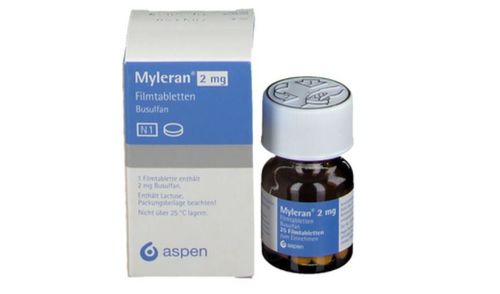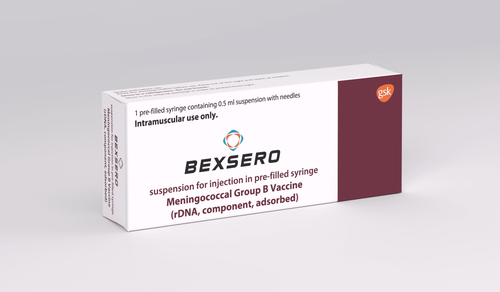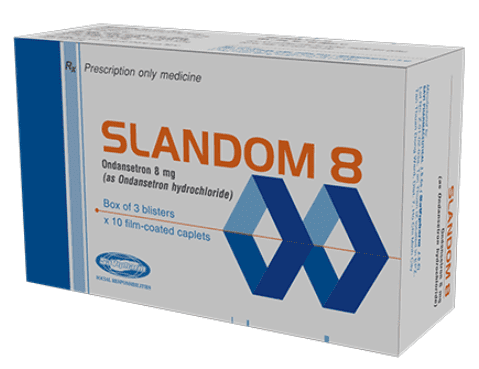This is an automatically translated article.
Ivosidenib is a prescription medicine used to treat acute myeloid leukemia in adults or people with health problems who cannot receive certain other chemotherapy treatments. In pediatric subjects, Ivosidenib's effectiveness has not been clearly demonstrated.
1. What does Ivosidenib do?
Ivosidenib is a small molecule inhibitor that targets the mutant enzyme isocitrate dehydrogenase-1. Ivosidenib is indicated for the treatment of acute myeloid leukemia in adults with isocitrate dehydrogenase-1 (IDH1) mutations.
In a word, in blood samples of patients with acute myeloid leukemia with mutant IDH1, ivosidenib has the effect of reducing 2-HG ex-vivo levels, decreasing the number and increasing the maturation rate of myeloid white blood cells.
2. How to use Ivosidenib?
Ivosidenib is prepared in the form of film-coated tablets with a strength of 250mg, stored in a bottle of 60 tablets and has a desiccant box.
The drug Ivosidenib is used orally. Patients are instructed to swallow the tablet whole and not split, crush, or chew. Avoid taking Ivosidenib with a high-fat meal. In case of taking Ivosidenib and vomiting, do not arbitrarily take another dose, but wait until the next dose is due. Never take a double dose within 12 hours.
The indication for the use of Ivosidenib must be made by an oncologist or hematologist. Select patients for Ivosidenib in the presence of acute myeloid leukemia and the presence of mutated IDH1 in the blood or bone marrow. In cases where patients do not have an IDH1 mutation at diagnosis, they should be re-tested because mutations in IDH1 may be present during treatment and at relapse.

Thuốc Ivosidenib có thể không đạt hiệu quả tốt nhất khi người bệnh tự ý tăng hoặc giảm liều
Patients should have a complete blood count and blood chemistry assessment before starting treatment with Ivosidenib. At the same time, these tests should also be repeated at least once a week for the first month, once a week for the second month, and once a month for the duration of treatment. In which, blood creatine phosphokinase monitoring should be done weekly during the first month of therapy; Monitor ECG at least once weekly for the first 3 weeks and then at least once monthly during treatment.
3. Possible side effects when taking Ivosidenib
3.1 Differentiation syndrome
In clinical trials, some patients with recurrent or uncontrolled acute myeloid leukemia treated with Ivosidenib experienced differentiation syndrome. The differentiation syndrome is associated with rapid proliferation and differentiation of myeloid cells, which can be life-threatening if left untreated.
Manifestations of differentiation syndrome in patients treated with Ivosidenib include noninfectious leukocytosis, peripheral edema, hypoxia, dyspnea, pleural effusion, hypotension, pulmonary edema , pneumonia, pericardial effusion, rash, fluid overload, tumor lysis syndrome and elevated serum creatinine.
Differentiation syndrome can appear as early as 1 day and up to 3 months after taking Ivosidenib. However, it is reversible upon discontinuation of treatment or after dose reduction.
3.2 Prolongation of the QTc . interval
Patients treated with Ivosidenib may experience prolongation of the QTc interval, the progression observed on the electrocardiogram and, more seriously, the onset of ventricular arrhythmias.
Of the 258 patients treated with Ivosidenib in the clinical trial, 9% were found to have a QTc interval greater than 500 milliseconds and 14% had an increase in QTc greater than 60 milliseconds, one patient ventricular fibrillation attributed to Ivosidenib.
The results show that the concomitant use of Ivosidenib with other drugs such as: Antiarrhythmic drugs, fluoroquinolones, antifungal drugs, 5-HT3 receptor antagonists... may increase the risk of prolonging the interval. QTc.

Bệnh nhân đang uống thuốc chống rối loạn nhịp tim nên lưu ý khi dùng thuốc Ivosidenib
3.3 Guillain-Barré . syndrome
Guillain-Barré syndrome occurred in approximately 1% of patients treated with Ivosidenib in clinical studies.
Therefore, during treatment with Ivosidenib, patients should be monitored for early onset of new signs or symptoms of dyskinesia and/or sensory neuropathy such as: Weakness Unilateral or bilateral, altered sensation, paresthesia or dyspnea. At this point, the decision to permanently discontinue Ivosidenib in patients diagnosed with Guillain-Barré syndrome needs to be made.
In summary, Ivosidenib is a complex chemotherapy regimen for adult patients with acute myeloid leukemia. This is a drug prescribed by a specialist and should be strictly adhered to in terms of use and dosage. At the same time, during treatment, patients need to be regularly checked by their doctor to monitor side effects and evaluate the body's response to this therapy, to ensure effective disease control as well as ensure that the patient is not affected. life safety.
Please dial HOTLINE for more information or register for an appointment HERE. Download MyVinmec app to make appointments faster and to manage your bookings easily.
References: webmd.com, accessdata.fda.gov, tibsovo.com













